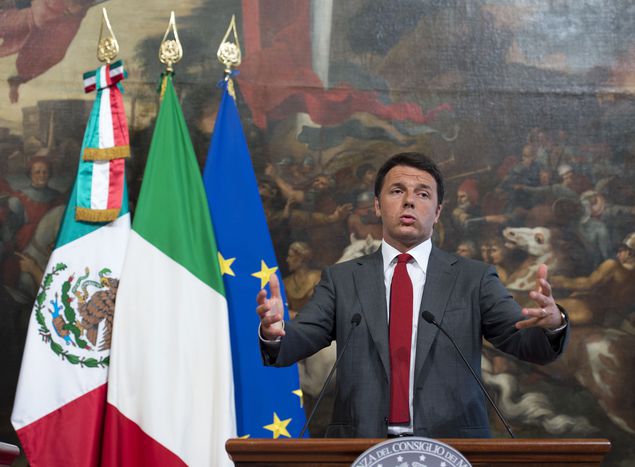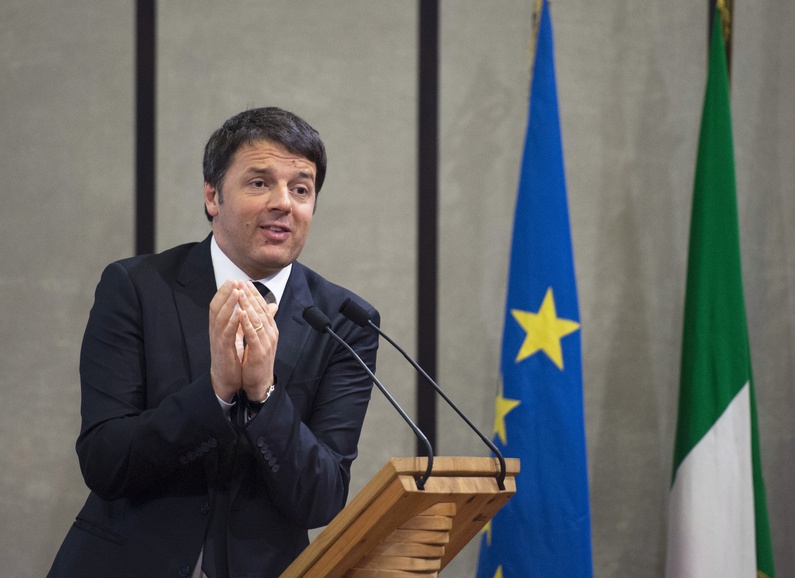
Migrants: Renzi's rant and the mystery of a Plan B
Published on
Translation by:
Maria-Christina DoulamiThe EU holds a different view from Italy on the issue of migration: Italian Prime Minister Matteo Renzi threatens to implement a "Plan B that will hurt Europe". While he is preparing to meet with Hollande and Cameron this week, a Plan B appears like yet another provocation by a specialist in shock phrases. Or does a Plan B really exist?
If there is Plan B, it means there was originally a plan A: namely, the redistribution of migrants in 25 European countries and the return of those who do not fall under emergency cases (economic migrants, not political refugees). While in most countries, these remittances apply to 39% of asylum seekers, Italy last year was limited to return home 'just' 14,000, according to the Huffington Post. As for other European countries, loyal to the Dublin II Regulation, they close their eyes - and their borders - to the situation. France denies having closed its borders but dozens of migrants wait for days in Ventimiglia to be able to set foot on French soil.
The Italian Prime Minister has been forced to ascertain the shortcomings of the regulation, which disadvantages and exposes geographically neighbouring countries of the EU to migratory flows that they can not manage alone. The regulation means, inter alia, that asylum applications are to be filed in the country of entry into European territory, something which has also been criticised by the Commissioner for Human Rights of the European Council, the UNHCR and the European Council for Refugees and Exiles. Dublin II proves to be an obstacle to the security of the newcomers and to the legitimate examination of their asylum applications, in addition to being unjust against certain countries that receive more requests than others. It is a situation that is unmanageable without federal assistance.
The anti-solidarity accusations that Renzi launched against the EU via Corriere della Sera are well and truly justified. The redistribution of 24,000 out of the 57,000 migrants who arrived in Italy – since the beginning of 2015 – across Europe, is insufficient. But what about the feasibility of this mysterious plan B?
A range of possibilities according to Corriere…
Italian Interior Minister Angelino Alfano also spoke of a secret plan, which "will reveal an Italy hitherto unknown because this situation is no longer tolerable." Coming from the mouth of a personality like Alfano, the "secret plan" sounds oddly like the revelation of the existence of the Gladio army by Andreotti in ‘89. And this can be scary!
Fiorenza Sarzanini of Corriere.it, the online version of daily centre-right newspaper Corriere della Sera, speaks of a "range of possible interventions." It would thus mean a mingling of more traditional diplomatic processes and shock methods.
In short, this means a set of measures, more or less feasible.
The first hypothesis that comes to mind is the assignment of a temporary permit to asylum seekers to enable them to cross borders and freely travel across Europe. It is one way of telling the EU: “You’re washing your hands of this? Well, so am I." It is certainly a challenge, but not impossible. We can also consider a requirement for vessels harbouring migrants in international waters, to return the migrants to their European country of origin, denying them access to Italian ports. Corriere has further thought of the repatriation of migrants by charter flights in irregular situations, a development that even the Renzi government envisaged. This has already been done in the past, but the situation in Libya should be considered as a special case, as it concerns political refugees.
As for the hypothetical military engagement of Italy in Libya regardless of the UN - it is what Renzi suggested when he spoke of a "less conventional intervention" – it is, fortunately, an unlikely solution. It would be dangerous for Italy, which would weaken without support, and it is absolutely frowned upon by President Sergio Mattarella. It is not Europe that would suffer the consequences, but Italy. The possibility of a "police" operation on the Libyan coast together with some EU member countries and Egypt’s help in order to cut-off smugglers, seems, all in all, much more realistic.
The EU's mistake and the crest of the Tuscan rooster
Italy is geographically (and therefore politically) at the forefront of the issue of migration. Abandoned - it must be said - by the rest of Europe. Alone, It has been forced to deal with managing 57,000 people who from the start of the year have reached European territory through Italy, and plans to open five barracks scattered throughout the country to set up as reception centres for migrants.
In the long term, this may strengthen the fear of Euroscepticism in Italy mixed with a rise of populist and identity movements. The hatred of the foreigner, the one with dark skin, who "comes and steals our jobs," will add to the hostility towards the country's European neighbours, the ones "who have abandoned us." In short, it is a bad move for the EU.
That is what the Italian Prime Minister had to deal with in terms of domestic policy. The governors of the regions of Veneto, Liguria and Lombardy, supported by the leader of the Lega Nord Matteo Salvini refused to welcome more migrants, calling on the spectre of the risk of a disease outbreak (yes, because stereotypes die hard in the strongly xenophobic northern conservative parts of the country).
Calling for national unity in a country where the last regional elections highlighted a strong advance of populism and the Lega Nord, invoking the help of a European Union that is no longer responding, Renzi - pushed to the limits – is 'peacocking'. It's something he's been known for since his provincial presidential debut in Tuscany. The only problem is: will he be heard, he who so often "cried wolf” in the past?
Translated from Migrants : le coup de gueule de Renzi et l'énigme du plan B



